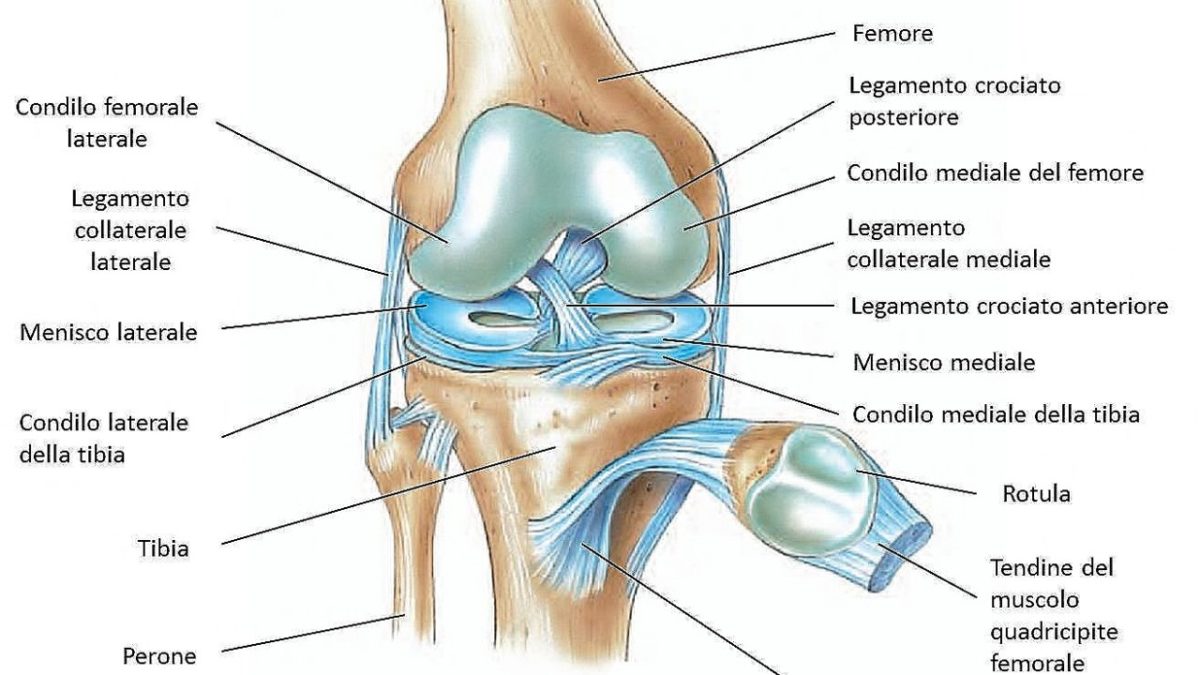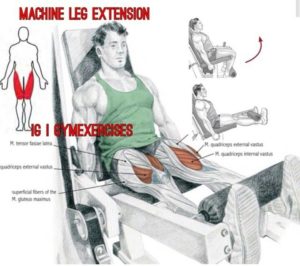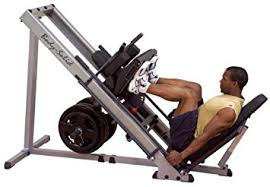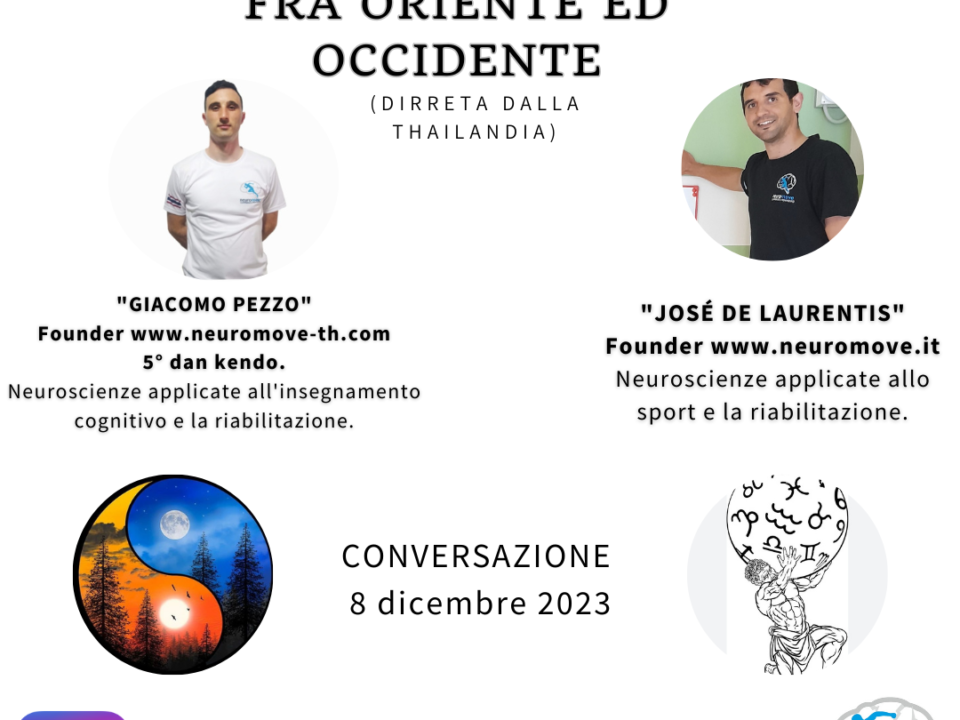- Motion Realizing
- info@neuromove.it
PROGRAM FOR Rehabilitative anterior cruciate ligament

Keywords: Teaching Methodology movement- rehabilitation-biological-maturation processes Reacquisition of engrams Neuropsychology engine-patient / student-Tips neurocerebral-Teaching and motor learning.
INTRODUCTION
The almost null difference between preventive training and post-injury-intervention kinesiology work has made it possible to write this article. Preventive training educates the neuro-psycho-movement to reduce the risk of injury (before the misfortune) kinesiological work re-educates the movement seeking the functional rehabilitation of the organism, so that they would be two sides of the same coin with variants and circumstantial events; pain, injury and/or trauma. However, it is obvious that the kinesiologist works preventively, and it is obvious that the teacher/trainer helps in the last phases of rehabilitation in the different injuries. In this almost indivisible line, it seems that the most important was the understanding that there is only one brain; that there is only one body with its possibilities and limitations of movement, but that nevertheless there are infinite types of psychologies, whose minds outline and structure those unique brains; those unique bodies with all their long genetic history in tow.
Kinesiologist teaches movement. Physics professor also education. The two make a living teaching packages movements according to the objective pursued by consensus and consumers: patients- Students; “Everything is teaching and learning the movement. "
That said, perceiving this as the most beautiful risk of modern life, we will focus on the analysis of a single case (this will allow expatiate on these types of injuries in a general way), whose patient-students has been operated ligament anterior cruciate; "LCA".
Particular case :
Patient / Student: Ian Escalante.
Sports: Football.
Diagnosis: Injury to the anterior cruciate knee and left lateral meniscus.
Treatment: ACL reconstruction WITH AUTOLOGOUS GRACILE E SEMITENDINOSUS PLUS ACCRUED lateral meniscus under arthroscopic guidance.
Operation: 03/15/18.
THE DOCTOR:
Rehabilitative development: "Hospital San Pancrazio" Trento, Italy: The patient-student has been exposed to cycles of massage therapy, assisted joint mobilization, muscle strengthening exercise, and work up with aid; "Partial support".
Medical Discharge: Presents autonomy in common movements, walks autonomously and safely with 2 crutches, and has an optimal partial load transition scheme, with fully unlocked splint of the operated leg. He has acquired the ability to go up and down stairs autonomously with the crutches, the knee is swollen and free of fluid, good objective and subjective stability, he does not have too much knee pain when loading, the joint is satisfactory (flexion: active and passive 130; extension: complete passive and active) proximal muscle hyposthenia persists (psoas/kF/ fm ⅘ all MRC).
Global status: Particular attention has been brought to ensure complete control of pain symptoms by monitoring the effectiveness tolerance of drugs used. During the internment there have been problems in global state. The patient is a good, organically generally asymptomatic clinical condition, clinical parameters are within range, with good hemodynamic compensation, abdominal thoracic-cardio-objectivity is in order, the intestinal flora and diuresis are regular.
START WITH THE REHABILITATION AND KINESIA NEUROMOVE (SECOND PHASE)
Important 1:Brotzman et al (2014) argue that the most important postoperative goal is to reacquire and then maintain knee extension. He also maintains that between the first 7 and 10 postoperative days it is necessary to reach 90 degrees of flexion, since if this amplitude is not reached, the risk of future chronic problems is high.
35 days after the operation, without crutches, and complete support of the operated limb (left knee), the patient-student, Ian Escalante, after outpatient hospitalization at the "Hospital San Pancrazio", began the second rehabilitation phase with us. In other words, Ian Escalante carried out 4 of the 5 rehabilitation phases with graduates in physical education and kinesiology from Neuromove and kinesia, respectively.
In this second rehabilitation phase (each phase lasts between 4 and 5 weeks, that is, approximately 30/35 days, with 3 weekly stimuli), gait re-education was sought with proprioceptive and self-perceptive exercises, insisting on the specific phases of the same: Heel-Plant-Toe, while eyes directions (psychomethodology) whose location on the tips of the feet should always look forward, like real eyes. Together with the Fixed-Bike they were part of the warm-up. The central part of this program, which lasted 1 1/2 months, consisted of active functional joint mobility in supine or sitting positions, flexion, extension, external and internal rotation of the knee.
Isometric strength approximately 15/20 seconds comprised the second block, activating them all the surface musculature Core sought; It is the propulsive musculature in its stabilizing function of the hip joints and knees. Assisted voluntary flexibility with inhibitory reflex techniques were the centrality of this rehabilitative phase.
Tips cerebral 1:The brain deceives itself: After muscle tears, joint surgeries, etc. the brain deceives itself by modifying the previous motor heritage (for example, that of walking) since it is necessary to change the basic gestural forms for others that protect the injured structures. Why does the brain deceive itself? Because in the long run and in the desire not to feel pain, in pursuit of protection, the natural neuro biomechanics change (this Biomechanics is subject to the balance that the body finds to take care of energies), and with them the dysfunctions and pains follow one another everywhere.
THIRD PHASE OF REHABILITATION
We noticed at the beginning of this phase that full knee extension was still not adequate, and taking into account its importance in functionality and gait phases, we included in the treatment the combination of Cryotherapy and Forced Passive Mobilization exercised in this case by Weights on the knee to exert a compressive effect on it and thus promote maximum extension. Cryotherapy is neither more nor less than the application of physical agents (in this case Cold) as therapeutic means and that can be used in any phase of treatment. The purpose of using this technique, in addition to generating analgesia, was to consolidate the extension gain achieved by forced passive mobilization and to make said gain permanent. On the other hand, cryotherapy produces a decrease in the basal metabolism of the region involved, generating vasoconstriction and a decrease in local blood flow, which is a preventive measure for another possible inflammatory event.
With almost 65 postoperative days and with the consent of the doctor, functional work began for the re-acquisition of the most essential neuro capacities for well-being: Strength, flexibility, balance, and stability. Emphasis was placed on the eccentric phases of the quadriceps (squats) and the hamstrings, focusing on the functional work for the activation of the gluteus medius, the popliteus and the adductors. Assisted flexibility and inhibitory reflex techniques were continued for full knee flexion, and voluntary flexibility was continued with the same reflex techniques learned efficiently by the student-Patient; he always showed an excellent psychological predisposition in motor learning. In this phase, we will point out, as a good analytical system, that proprioception was used in each of the functional movements, of which many of them were unstable, unipodal, or a mixture of the two.
Tips cerebral 2: The role of LCA in proprioception is a great object of study. It has been confirmed that the knees of patients without LCA-students have less proprioceptive capacity, which would have a damaging effect on the reflection of dynamic stabilization hamstring. It is still unclear what the mechanism by which rehabilitation after ACL reconstruction improves proprioception, however is clear, "and has shown improvement" after programs proprioceptive training is for people with a reconstructed ACL, as students without LCA.
FOURTH PHASE OF REHABILITATION
Burden, difficulty, and angulation of functional exercises increased.
It is even more focused on the extensor and flexor muscles of the ankle.
the leg-extension (open kinetic chain) in a safe angulation, between 75 to 60 degrees of knee flexion, without ever reaching the maximum knee extension, ie flexural 0 knee was added as the ACL is stress biomechanical. Furthermore said leg-press (closed kinetic chain) with a certain progression of weight.
important 2: Open-chain exercises (CA) or closed chain (CC)?

(LEG EXTENSION;CA) (LEG PRESS;CC)
Brotman and colleagues (2014) say the exercises closed chain "leg press" increase the compressive strength of the knee through the co-contraction of the hamstrings and quadriceps, so it has been suggested that these factors help reduce the strength of the previous cut in the knee, which adversely act on the ACL graft in maturation pathway.
Beynnon et al. (1997) have shown through their investigations some differences between closed and open chain exercises: The co-contraction of quadriceps and hamstrings in the "Leg-press" (CC), and the decrease in the activity of the the hamstrings as the angle of knee flexion increases. During CC exercises, the activity of the vastus increases, while in AC exercises, the activity of the rectus femoris increases. CA "Leg-extension" exercises produce a more selective muscle activation, thus allowing a more specific potentiation. However, muscle fatigue could lead to loss of the stabilizing effects of these isolated muscles, thus jeopardizing the ACL. The exercises in CC allow an activation of the agonist muscles, and although they do not perform a selective muscular potentiation, they nevertheless ensure a safer environment for the ACL.
…
At this stage Neuromove and Kinesia developed exclusively block proprioception dynamic exercise; with different types of jumps on stable and unstable bases. In addition the slow gestures of support unipodal different techniques and progressing to running with closed eyes were included in this section.
This phase continued to insist with stretching balancing purposes and improving elasticity of some muscle chains, especially in healthy hemicuerpo who had to endure the nearly 2 months of constant load (right leg was the only one supported) and resulting caused cramps and regular contractions.
…
Tips cerebral 3: Laphart et al (1992 and 1998) have advised a specific program to act on the three levels of neuromuscular control.
1) Control of the higher centers:
It develops through the conscious and repetitive activity of positioning enhancing sensory information correct activity improving joint stabilization.
To improve the unconscious control distraction techniques are performed during the development of the exercises, such as throwing and catching a ball in the air during the development of a task, such as running neuro-cognitive tasks; add numbers- read words (Methodology Neuromove and Kinesia)
2) Control of the brainstem
It is very useful to maintain balance exercises and postures starting with open eyes and then passing exercises with closed eyes to eliminate visual afferents.
3) The proprioceptive control spinal level:
exercises where sudden changes of joint positions are necessary is used. plyometrics and fast movement on various surfaces improve the function of the reflex arc in dynamic stabilization.
FIFTH PHASE OF REHABILITATION.
Although not all stages of rehabilitation involving the same amount of time (number of microcycles work), we estimate that about one fourth or fifth month postsurgical loads specific work begin to increase in both volume and in intensity (load components ), representing a periodization of work that best fits the logical relationships between stimuli and made rest periods (density).
Said phase progression means further enhance the capabilities worked in the previous phases, but in this case we take our athlete to strength levels are optimal and specific technical requirements according. Similarly the (flexibility) angular sectors should also have direct correlation with the sport in question. These two neuromotor abilities, both strength and flexibility are a guide to help our methodological work, since both allow us to objectify range of motion and strength levels as they progress phases of rehabilitation.
Important 3: The criteria for high sports we consider when determining the return to competition, ie exposure when higher incidence of injuries (most common in competitive games than in practice), there are two important adds.
minimum bending angular sector: 120 ° or more
optimal angular sector extension: Full extension in position Biped.
Minimum level quadriceps strength: 90% or more as contralateral limb.
Minimum level Hamstring Strength: 70 or 80% of the ipsilateral quadriceps.
It is recalled that the postsurgical process lesion Anterior Cruciate Ligament (ACL) must complete a histological maturity (ligamentization graft) of at least 18 months of evolution, why is not convenient venture with the return of the athlete before 6 months suggested by the research. This means that the main purpose of rehabilitation is to optimize the tuning of the athlete the best possible way, without this implying shorten biological times of that process.
Tips cerebral 4:In this last phase we believe it is important to reproduce specific gestures of the sport (with the soccer ball in this case); the reproduction even of the same gesture that has led to the injury. García (2017) argues that there are four moments of motor relearning; 1) The moment before the gesture, 2) The moment when the gesture is made with cortical control, 3) The subcortical moment and the last moment of integration of the gesture into the function, that is, automation. KINESIA AND NEUROMOVE proposes a precedent moment in rehabilitation; “The imagination of the gesture well executed”; perceiving above all the fair supports (good base of support in the soccer spike), the adjustment of the Core, alignment of the knees, alignment of the spine / in the event that the athlete jumped; The stability in the flight phase, the contemplation of the uncertainty in the flight that will influence the fall, good cushioning, stable fall. We emphasize the gesture that has produced the injury, since the brain involuntarily inhibits certain responses, that is, certain movements that evoke the traumatic event, and whose pain it does not want to suffer again. It is the famous motor footprint that we must make forget through new motor engrams, through a safe environment, seeking that learning be with the highest quality and warmth possible.
…
As we have already mentioned above about the importance of achieving optimal ranges of motion after the 8th week of rehabilitation in average terms, we can also find those cases in which they present some complication to achieve degrees of mobility, whether they are knee flexion or extension. We know that insufficient flexion (-90° after 8 weeks of rehabilitation) is likely to be a complication from the point of view of angular progress and that the possibility of performing Spontaneous Passive Mobilization under anesthesia is highly probable.
The difficulty of achieving optimal exsión in the aforementioned deadlines is if you want a significant problem, considering the incongruity of articular surfaces that this entails and its consequences from the functional point of view.
There is a complication described by Jackson and Schaefer in 1990 referring to the loss of knee extension after reconstruction of the Anterior Cruciate Ligament (ACL) and which they called Cyclops Syndrome. It is one of the most feared complications of this surgery. This syndrome is characterized by pain associated with the lack of full extension of the knee and is classically due to the formation of a fibrous nodule dependent on the graft, which produces limitation of joint extension. The differential diagnosis includes the very anterior positioning of the bone tunnels, arthrofibrosis, infrapatellar contracture syndrome, pinching of the graft with the intercondylar groove, and fat necrosis of Hoffa's body.
Once diagnosed Cíclope injury, Arthroscopic surgery for resection areas that produce fibrosis symptoms, and response to physical therapy is low without optimal results.
CONCLUSIONS:
We have tried to enumerate and methodologically teaching steps and phases that take place during the rehabilitation of a knee severe sprain, where the primary lesion sits in injury Anterior Cruciate Ligament (ACL).
Said that the return to sports participation, whether it competitively or not achieved in average terms, after 6 or 8 months post-op, considering that the process of ligamentization continues until after 12 months and more .
Rehabilitation as a process, has 3 parameters to take into account when evaluating the results:
1-Optimal Ranges mobility (ROM): Full extension and greater than 110 ° -115 ° flexion
2-Increased Levels Strength: 90% or more compared to the contralateral limb.
3-Functional Test Criteria pain and stability with scores greater than 80%
Rehabilitation is a biological and unique process that reflects the principle of individuality, which states that each mammal as a unit will have different and own answers.
Authors: José de Laurentis and Pablo Gaitan.
Bibliography :
Brotzman, "Rehabilitation in orthopedics.
Mario Di Santo, "Range of Motion".
Carmelo Pittera ,“Sistema sicom” .
Garcia, “Moments motor learning in rehabilitation. "
Stefano Tamorri, "Neurosciences and Sports".
Carlos Infante and Felipe Tiro, “Medicine and sports traumatology”.
Ramos Vertiz ,”Traumatology and orthopedics”.
Jari Ylinen, “Therapeutic stretches”.
Bahr Maehlum,” Sports injured, diagnosis and treatment”.
Williams overtaking, “Sports medicine and rehabilitation”.





